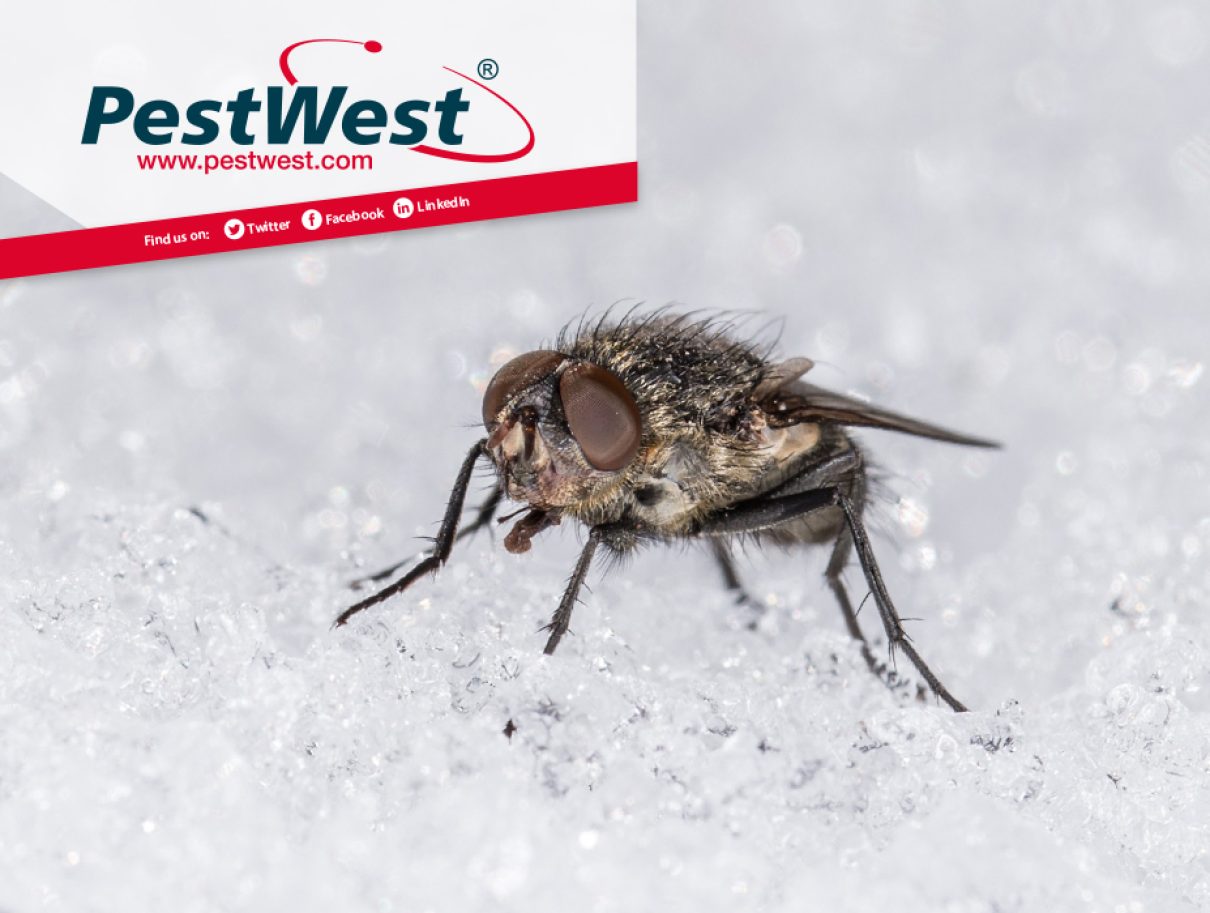Fly problems on farms, at waste sites and even domestic premises can often abate as winter approaches. This is mainly due to the drop in temperature which limits fly breeding, development and activity in general.
However, where do the flies go? Workers at farms, waste sites and also members of the public can sometimes have the perhaps erroneous view that flies ‘die off’ in the winter…but is that really the case? If they have completely died out, where exactly do they come from again? We have moved on from the days of ‘spontaneous generation’ of fly maggots from rotten food thanks to Francesco Redi….
In 1668 Francesco Redi designed a simple yet ingenious experiment to prove that flies do not generate spontaneously from rotten meat, showing that adult flies must access the meat to lay eggs in order for larvae to develop. All this came from using several pieces of meat, paper, cheesecloth and flies; in what was one of the very first scientific experiments. Only flies can make more flies!
We digress. Back to the question of where do flies go in winter. In fact, Redi’s work is not much of a digression from our original question, as the juvenile stages of flies and an understanding of the fly life cycle can be the answer to the status of this group of insects in winter. As a reminder, flies go through complete metamorphosis, which is egg – larva – pupa – adult. Many species of flies overwinter in their immature stages through the cold months. So, they don’t die off when it’s cold and then spontaneously generate in the warmer months. It would be tempting to talk about cluster flies such as Pollenia rudis at this point but most in the industry know about their overwintering capabilities as adults, especially in attics. However, the following fact should be mentioned nonetheless: These 7-9mm long flies are normally clearly recognizable by their frizzy, golden-yellow, partly also silvery hair of the breast segments. During the winter, most of the hair can be lost. In springtime, just some hair remains -often only in protected areas- which makes it harder to identify this species.
Other fly species deserve closer attention too, as follows below:
Musca domestica
Research shows that houseflies Musca domestica can overwinter as adults in refuse tips, by sheltering in pockets of fermenting refuse that maintains a continuously high temperature. In the same study, metal parts of an adjacent building containing wastepaper reached a temperature of 18°-25°C and flies were observed crowded on to this, pairing frequently. When the researchers explored the refuse (someone has to…) all stages of larvae were found within it. Interestingly, sheltering adults were found up to the middle of January and newly emerged flies at the end of February, illustrating perfectly the ability of Musca domestica to survive year-round in temperate regions, tucked away in perfect microclimates at a site.
Observations of M. domestica overwintering behaviour on farms showed that a small number of flies were always present as adults but, curiously, very few larvae were located in manure heaps. A few were found in animal bedding in a cattle stall where the temperature was constantly above 20°C, showing that these little pockets of heat can be the perfect hiding place for flies despite the cold external conditions of winter. Laboratory work showed that fly development could be retarded by low temperatures to a maximum period of 90 days, illustrating their ability to ‘stick things out’ in cold conditions. Getting a bit more specific about cold conditions, it is known that housefly overwintering areas need to be microhabitats that are above -5°C, with enough time over 10°C to permit development of eggs, larvae and pupae.
Stomoxys calcitrans
House flies are not the only ones to consider. The stable fly Stomoxys calcitrans, also known as the ‘biting house fly’ has ways of overwintering. The vertical movement of stable fly larvae in response to temperature in manure mounds has been modeled. The aim was to simulate the migration of overwintering larvae. The study indicated that stable fly larvae easily avoid freezing by migrating downwards in manure mounds during the winter. That’s one way to keep warm! A pair of gloves would be preferred.
Belgica antarctica
As the cold nights draw in, spare a thought for Belgica antarctica, the Antarctic Midge. It’s a lonely insect, the only 6-legged representative on the continent of Antarctica… and it’s cold, very cold. It cannot even fly as it is wingless. It has probably evolved in this way under pressure from the windswept conditions; the benefit is to avoid being blown into inhospitable areas. Its larval stage is arguably the toughest of all flies, being able to survive encasement in ice for most of the year.
Thaumatomyia notata
This small fly-type with a length of only 2mm reminds a bit of the fruit flies of the genus Drosophila. The larvae live on plant roots (mostly grasses), where they eat a wholefood diet consisting of lice of the genus Pemphigus. Meanwhile, the adult flies suck flower nectar. Very large swarms can be found on tall, free-standing buildings with surrounding lawns. Some of these huge swarms reminded that much of clouds of smoke that they mistakenly triggered firefighting operations. Thaumatomyia notata can form 2-4 generations per year.
Musca autumnalis
The face fly or autumn housefly can easily be confused with Musca domestica. The males of both types, however, can be reliably distinguished by the eye distance and the females by the colouring of their abdomen. The females lay 30-230 eggs individually under the surface of fresh cow flats, which are usually no older than one hour. In summertime, the females of the autumn housefly like to stay on cattle and horse pastures, where they lick up eye and nasal fluid, saliva as well as blood (whenever accessible). Whilst the females need a protein- and amino acid-rich diet, the males live mainly off flower nectar. During strong winds, severe rain and temperatures below 15°C, these flies are inactive. As a winter habitat, the warmer south and west sides of buildings are particularly popular.
Conclusion
To conclude, the flies don’t ‘die off’, they find adequate winter habitats inside, mainly by ‘invading’ buildings. Prior to that, these insects accumulate on light house facades with the most hours of sunlight.
When spring is coming, these species trying to get back into the open air and can cause an unpleasant surprise, if they haven’t been already temporarily noticeable on warm winter days by any activity.
As a preventive measure against invading flies, facades should be sealed, windows can be protected with insect screens and shutters should be fitted with shutter seals.
In addition, the Titan 300 by PestWest is a handy tool for all commercial uses. It can cope with heavy fly infestations and be adapted to operate as a ‘cluster fly unit’ by removing the tray. After the infestation is over, it can be used as another preventive measure as the flies can be caught with this unit before getting comfortable in their winter habitats.
This article was originally published in Pest Control News Issue 109, December 2016, and has been updated for freshness, accuracy and comprehensiveness. The main source of data for the update of this article was research being carried out in 2019 by the Killgerm biologists in Germany.













